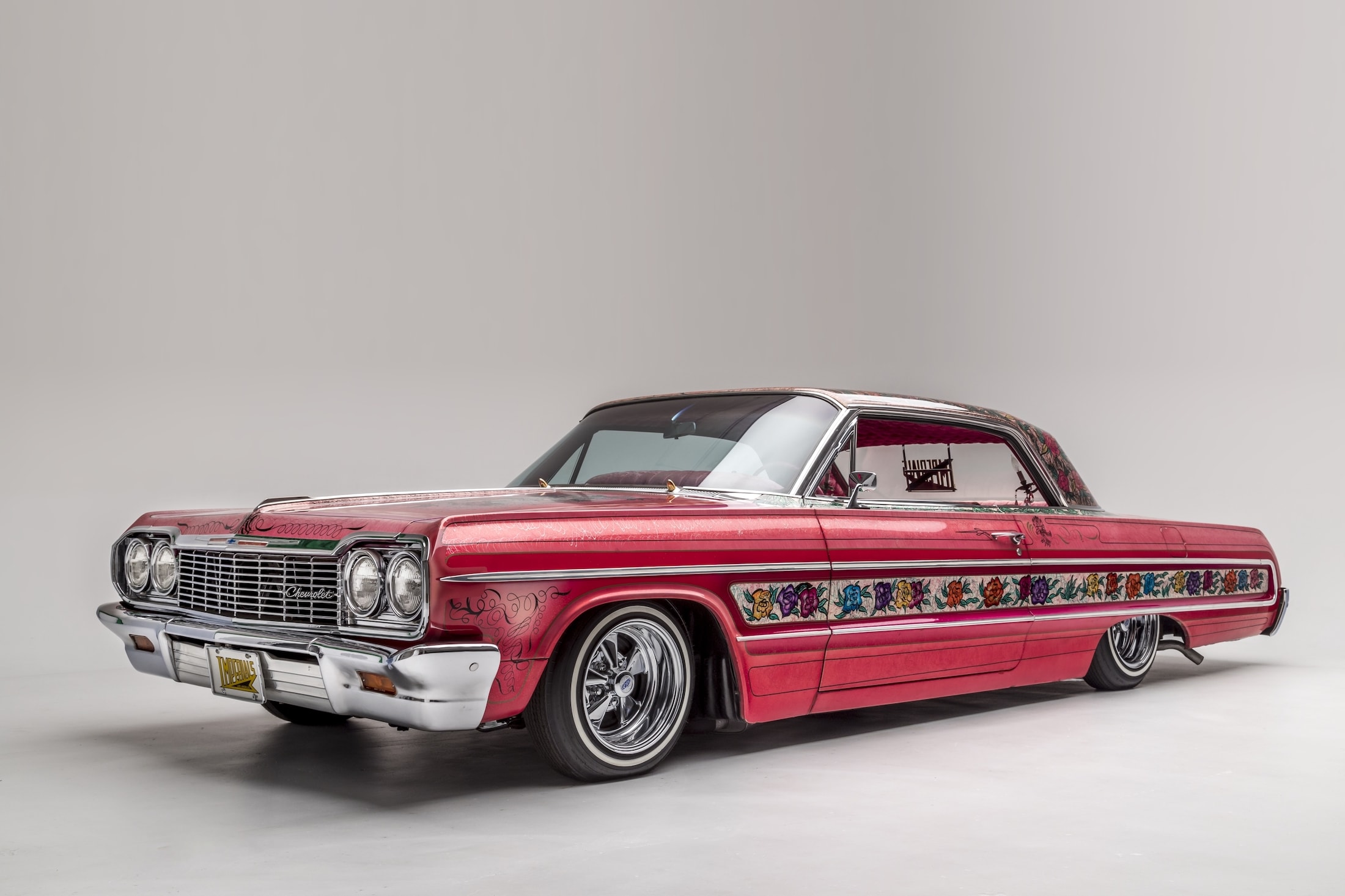The 1964 Chevrolet Impala “Gypsy Rose” occupies a legendary status as the most recognizable lowrider in automotive history. Its journey from Southern California streets to Hollywood fame underscores the cultural significance of lowriding and its evolution into a global phenomenon.
Rooted in post-war Southern California, lowriding emerged as a cultural expression within the Mexican-American community before transcending cultural boundaries. The Impala “Gypsy Rose,” one of three custom cars conceived by Jesse Valadez of Imperials Car Club, epitomizes the artistry and craftsmanship synonymous with lowrider culture.
Despite facing adversity, including the tragic destruction of one of its counterparts, the “Gypsy Rose” endures as a symbol of resilience and creativity. Its vibrant paint scheme, adorned with over 100 hand-painted roses by customizing legend Walt Prey, captures the essence of lowrider aesthetics.

Beyond its visual appeal, the “Gypsy Rose” embodies luxury and extravagance, featuring a lavish interior outfitted with crushed velvet upholstery, chandeliers, and a cocktail bar. These opulent touches raise the Impala to the status of a mobile palace, reflecting the ingenuity and passion of its creators.
Ford’s recognition of the “Gypsy Rose” as the first lowrider included in the National Historic Vehicle Registry underscores its cultural significance and enduring legacy. As it joins other iconic lowriders in exhibitions like the Petersen Automotive Museum’s “Best in Low: Lowrider Icons of the Street and Show,” the “Gypsy Rose” continues to fascinate audiences and inspire appreciation for lowrider culture worldwide.
The legal challenges faced by lowriding, from California Vehicle Code restrictions to local cruising bans, underscore the cultural significance and resilience of the lowrider community. Despite legislative hurdles, lowriding perseveres as a symbol of cultural pride and artistic expression, cherished by enthusiasts and recognized for its enduring impact on automotive history.

